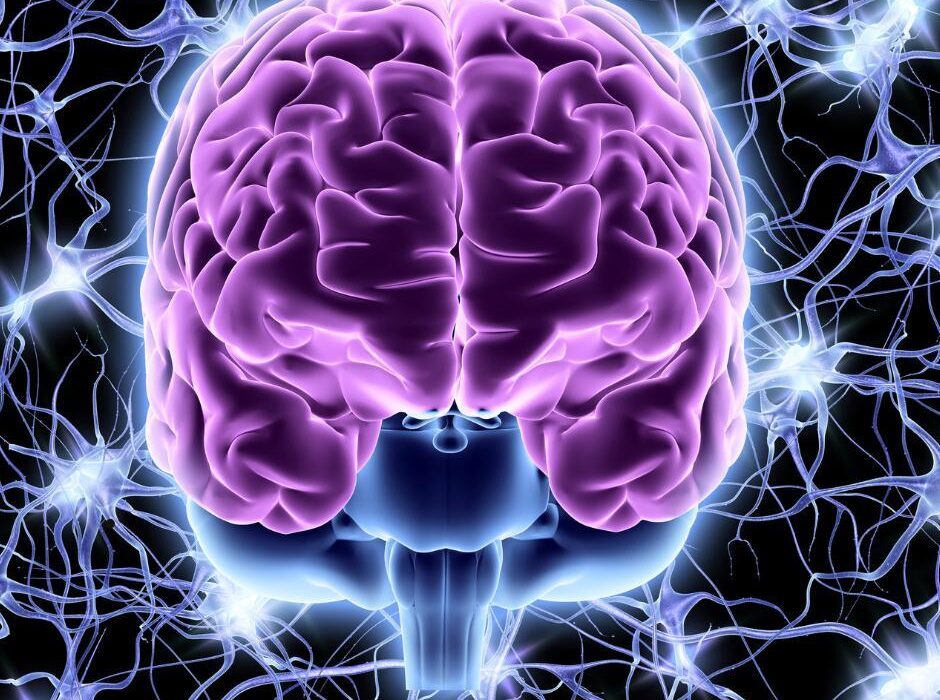Natural Language Processing (NLP) is one of the most transformative technologies in the field of artificial intelligence. It bridges the gap between human communication and computer understanding, allowing machines to interpret, process, and generate language in ways that feel increasingly natural. Whether you are chatting with a virtual assistant, asking a smart speaker for the weather, or typing a message to a customer service chatbot, NLP is working behind the scenes to make the interaction possible.
Chatbots and voice assistants represent two of the most visible and impactful applications of NLP in today’s digital ecosystem. These systems have changed how humans interact with technology, turning rigid command-based interfaces into fluid, conversational experiences. But behind that simplicity lies a complex web of linguistic models, algorithms, and machine learning systems that process every word, tone, and intent in real time.
Understanding how NLP powers these conversational systems requires exploring how computers interpret human language, how models are trained, how dialogue systems are designed, and how AI is continuously improving to make conversations feel more intelligent, personalized, and human.
The Foundations of Natural Language Processing
Natural Language Processing is a subfield of artificial intelligence that focuses on enabling computers to understand, interpret, and generate human language. Human languages—English, Spanish, Mandarin, Bengali, Arabic, and thousands of others—are complex, ambiguous, and deeply tied to context. Unlike programming languages, which are structured and rule-based, human communication is full of nuance, metaphor, and variation.
At its core, NLP combines computational linguistics—the study of linguistic structure and meaning—with machine learning, which allows systems to learn patterns in data. Early NLP relied heavily on rules and grammar-based approaches. Linguists and programmers defined sets of rules for syntax, morphology, and semantics, hoping to teach computers how to parse and respond to language. While effective in narrow domains, these systems were brittle and failed to capture the flexibility of real human dialogue.
The modern era of NLP began with the rise of statistical methods in the 1990s, followed by the deep learning revolution in the 2010s. Instead of manually coding rules, researchers began training models on massive datasets of text, letting algorithms learn patterns of usage, meaning, and context. Deep learning, particularly through neural networks, transformed NLP from rule-driven systems to data-driven understanding. This evolution made possible the advanced chatbots and voice assistants we use today.
The Key Components of NLP in Conversational Systems
Every chatbot and voice assistant is powered by several core components of NLP working together. The first step is understanding the user’s input. When a person speaks or types a message, the system must convert that input into a form the computer can analyze.
In the case of voice assistants, speech recognition technology transforms sound waves into written text. This process, known as automatic speech recognition (ASR), involves acoustic modeling, language modeling, and signal processing. Once the spoken words are converted into text, the same NLP pipeline used by chatbots comes into play.
The next stage is syntactic and semantic analysis. The system breaks down sentences into their grammatical components—identifying nouns, verbs, and phrases—and interprets their meaning. Semantic understanding involves mapping words and phrases to concepts and relationships. For example, the phrase “Book a flight to New York tomorrow morning” involves identifying an action (“book”), an object (“flight”), a destination (“New York”), and a time (“tomorrow morning”).
This understanding step is often called intent recognition and entity extraction. The intent describes what the user wants to do, while entities are the specific details related to that intent. Once the system has understood the request, it must decide how to respond. This involves dialogue management, where the AI determines the next action—whether to retrieve information, ask a follow-up question, or execute a command.
Finally, the response must be generated. Natural language generation (NLG) converts structured data or internal representations into coherent, human-like sentences. In voice assistants, these sentences are then converted into speech using text-to-speech (TTS) synthesis, completing the interaction loop.
Speech Recognition: The First Step in Voice Assistants
For voice assistants like Siri, Alexa, or Google Assistant, speech recognition is the first and perhaps most critical step. This technology transforms the user’s spoken input into text that NLP systems can analyze.
Speech recognition systems are built using a combination of acoustic models, pronunciation models, and language models. The acoustic model maps audio signals to phonetic units—the smallest sounds of speech. The pronunciation model connects phonemes to words, accounting for different accents and pronunciations. The language model predicts word sequences based on probability, helping the system choose between similar-sounding words based on context.
Modern speech recognition uses deep neural networks, particularly recurrent neural networks (RNNs) and transformers, to model the temporal dependencies in speech. Large-scale training data from diverse speakers, dialects, and acoustic environments allows these systems to achieve remarkable accuracy. Today, state-of-the-art systems can transcribe speech with error rates approaching those of human transcribers.
Once the spoken words are accurately transcribed, NLP takes over to interpret meaning and intent.
Understanding Intent: How Machines Interpret Human Goals
Intent recognition is the heart of any conversational system. It answers the question: “What does the user want?” This task is far from trivial because human language is rarely direct. People use idioms, metaphors, and incomplete sentences, often expecting the system to infer meaning from context.
For example, the sentence “I’m hungry” could imply a request for restaurant suggestions, food delivery, or nearby grocery stores, depending on context and user history. To interpret intent accurately, NLP models analyze both linguistic cues and contextual information.
Modern intent recognition relies on deep learning models trained on large datasets of labeled dialogues. Each example includes a user utterance paired with a predefined intent category, such as “book_flight,” “check_weather,” or “play_music.” Models learn to associate certain patterns of words and structures with specific intents.
The most powerful systems today use transformer-based architectures, such as BERT (Bidirectional Encoder Representations from Transformers) or GPT (Generative Pre-trained Transformer), which capture the contextual meaning of words by analyzing their relationships within entire sentences. These models can generalize across variations in phrasing, allowing them to recognize the same intent even when expressed in different ways.
Extracting Entities and Context
Once the system identifies the user’s intent, it must extract the relevant pieces of information—the entities—that define how to fulfill that intent. Entities can include names, dates, locations, amounts, or any other parameter necessary to complete an action.
For instance, in the request “Set an alarm for 7 a.m. tomorrow,” the intent is “set_alarm,” and the key entity is “7 a.m. tomorrow.” In “Find Italian restaurants near me,” the intent is “find_restaurant,” and the entities are “Italian” (cuisine) and “near me” (location).
Entity extraction, also called slot filling, uses techniques from named entity recognition (NER). Deep learning models trained on annotated text can automatically detect and classify these entities. Combining this with contextual reasoning allows chatbots and assistants to maintain coherent dialogues across multiple exchanges.
For example, if a user says, “Book a flight to London,” and then follows with “Make it for next Friday,” the system must remember the previous context—knowing that “it” refers to the flight to London—and update the booking accordingly. This requires dialogue state tracking, which keeps track of user intentions and entities throughout the conversation.
Dialogue Management and Response Generation
Understanding what the user means is only part of the problem; deciding how to respond appropriately is equally important. Dialogue management is the process by which chatbots and voice assistants decide the next step in a conversation.
Early dialogue systems used rule-based approaches, where developers explicitly defined how the system should respond to specific inputs. These systems worked well in narrow domains, such as customer service, but struggled with open-ended or ambiguous conversations.
Modern dialogue management uses machine learning and reinforcement learning to optimize responses dynamically. The system learns policies—rules for choosing actions based on the current dialogue state—that maximize user satisfaction or task completion. Reinforcement learning allows the AI to learn from experience, adjusting its strategies based on feedback.
Once the system decides what to say or do, it generates a response. Natural language generation (NLG) converts internal representations into grammatically correct, contextually appropriate sentences. In simple systems, responses are selected from prewritten templates. In advanced systems, deep learning models generate responses word by word, allowing for more flexibility and human-like variation.
Voice assistants go one step further, using text-to-speech synthesis to vocalize their responses. Modern TTS systems use neural networks to produce natural, expressive speech that captures intonation, rhythm, and emotion.
The Role of Large Language Models
The emergence of large language models has revolutionized NLP and, by extension, chatbots and voice assistants. Models such as GPT, Claude, Gemini, and LLaMA are trained on vast amounts of text data from books, websites, and other sources. They learn the statistical relationships between words and phrases, enabling them to generate coherent and contextually relevant responses to almost any input.
Large language models rely on transformer architectures, which use mechanisms called attention layers to analyze how words relate to each other within a sentence and across sentences. This allows them to capture both local and long-range dependencies in language, providing an unprecedented understanding of context and nuance.
In conversational AI, these models power open-domain chatbots capable of discussing a wide range of topics naturally. They also serve as the backbone of modern virtual assistants, enabling features such as multi-turn conversations, reasoning, and even emotional awareness.
However, while large language models excel at generating text, they can also produce errors or “hallucinations,” generating plausible-sounding but incorrect information. Developers address this challenge through fine-tuning, grounding models in verified data sources, and using hybrid systems that combine generative models with structured knowledge bases.
Personalization and Context Awareness
One of the key advances in modern conversational AI is personalization. Chatbots and voice assistants are increasingly able to adapt their behavior based on user preferences, history, and context. This makes interactions feel more human and efficient.
For example, a voice assistant that knows a user’s daily routine can proactively provide relevant information: “It looks like traffic is heavy on your usual route to work. Would you like to leave early?” Similarly, a customer service chatbot can access a user’s previous purchases or support tickets to provide faster, more accurate help.
Personalization requires integrating NLP with other AI technologies, such as recommendation systems, user modeling, and contextual reasoning. Privacy and data security are crucial concerns in this process. Modern systems anonymize and encrypt personal data to protect user identities while still delivering tailored experiences.
Multilingual and Cross-Cultural Capabilities
As chatbots and voice assistants become global, the ability to understand and generate multiple languages has become essential. NLP systems must handle linguistic diversity, dialects, idioms, and even cultural references.
Multilingual models trained on parallel corpora—datasets that contain equivalent texts in multiple languages—allow assistants to operate across linguistic boundaries. Transfer learning enables models trained on one language to adapt to others with smaller datasets, improving performance in low-resource languages.
Cross-cultural understanding goes beyond translation. It involves recognizing cultural norms, conversational styles, and expectations. For instance, polite forms, tone, and humor differ across languages. NLP research increasingly focuses on cultural adaptation to ensure that conversational AI feels natural and respectful worldwide.
Challenges in Natural Language Processing
Despite incredible progress, NLP still faces significant challenges. Human language is inherently ambiguous, context-dependent, and constantly evolving. Words can have multiple meanings, and meaning can shift depending on tone, body language, or shared knowledge.
For example, the phrase “Can you pass the salt?” is literally a question but functionally a request. Detecting such pragmatic nuances remains difficult for machines. Similarly, irony, sarcasm, and emotional undertones often escape computational interpretation.
Bias and fairness are also major concerns. Since NLP models learn from data produced by humans, they can inadvertently inherit social and cultural biases. Addressing these biases requires careful dataset curation, algorithmic fairness techniques, and ongoing evaluation.
Another challenge is robustness. Conversational systems must handle noisy input, including speech errors, background noise, slang, and code-switching between languages. They must also be able to recover gracefully when they misunderstand a user’s request.
Finally, privacy and ethics play critical roles. Voice assistants continuously process audio data, raising questions about surveillance, consent, and data security. Developers must ensure transparency, allow users to control their data, and implement strong encryption standards.
The Integration of NLP with Other AI Fields
NLP does not operate in isolation. Its integration with other branches of AI enhances the capabilities of chatbots and voice assistants. Computer vision, for example, allows systems to interpret gestures, facial expressions, and visual context, enabling multimodal interactions where users can speak, point, or look at objects.
Knowledge graphs and reasoning systems help assistants provide factual, grounded answers. When a user asks, “Who directed Inception?” the system can query structured databases to return “Christopher Nolan” instead of generating a guess. Similarly, integration with reinforcement learning allows assistants to improve through user feedback, learning which responses are most effective over time.
The fusion of NLP with affective computing—AI systems that recognize and respond to emotions—is another promising frontier. By analyzing tone of voice, word choice, and rhythm, assistants can infer emotional states and respond empathetically. This has applications in mental health support, education, and customer service.
The Role of NLP in Customer Service Chatbots
One of the most widespread applications of NLP is in customer service automation. Businesses across industries use chatbots to handle inquiries, provide support, and streamline communication. NLP enables these bots to understand natural language questions, retrieve relevant information, and respond conversationally.
For example, when a customer types “I want to change my delivery address,” the chatbot uses intent recognition to identify the task and entity extraction to find the new address. It then interacts with backend systems to update the record and confirms the change with the user.
Advanced customer service chatbots can handle complex interactions involving multiple steps, such as booking appointments, processing refunds, or troubleshooting technical issues. They can also escalate conversations to human agents when necessary, ensuring seamless collaboration between human and machine.
These systems reduce operational costs, improve response times, and offer 24/7 availability, transforming how businesses interact with customers.
The Evolution of Voice Assistants
Voice assistants have evolved from simple command-following tools to sophisticated conversational partners. Early systems like Apple’s Siri and Google Now focused on executing predefined commands—checking the weather, sending texts, or playing music. Over time, advances in NLP and machine learning have enabled assistants to handle open-ended questions, maintain multi-turn conversations, and understand context across sessions.
Today’s voice assistants use cloud-based architectures that combine speech recognition, NLP, and massive language models. They can integrate with smart home devices, calendars, and apps, allowing users to control their environment through natural speech.
In cars, voice assistants enhance safety by enabling hands-free control. In homes, they serve as hubs for entertainment and automation. In workplaces, they assist with scheduling, communication, and information retrieval. As NLP continues to improve, voice assistants are expected to become even more proactive, anticipating user needs rather than merely responding to commands.
Advances in Multimodal Interaction
The future of chatbots and voice assistants lies in multimodal interaction—the integration of speech, text, images, and gestures into a unified conversational experience. Humans do not communicate through words alone; we use facial expressions, body language, and tone to convey meaning.
Multimodal AI systems combine NLP with computer vision and sensory data to interpret these cues. For example, a virtual assistant could use a camera to recognize that a user looks confused and offer clarification, or a customer service bot could analyze uploaded images to assist with technical issues.
This blending of modalities brings AI interactions closer to natural human communication, expanding their usefulness in education, healthcare, and robotics.
The Future of NLP in Conversational AI
The trajectory of NLP suggests a future where chatbots and voice assistants become increasingly indistinguishable from human interlocutors. Advances in generative AI, context modeling, and emotional intelligence are driving systems that can reason, empathize, and adapt in real time.
One emerging trend is continual learning—systems that learn from individual users over time, refining their models to better reflect personal preferences. Another is on-device processing, which enables speech and language understanding without sending data to the cloud, enhancing privacy and responsiveness.
Quantum computing and neuromorphic hardware may further accelerate NLP performance, enabling real-time comprehension and generation of complex dialogue structures.
Ethical AI will also play a defining role. Future systems will need to balance personalization with privacy, automation with human oversight, and intelligence with accountability. The goal is not to replace human interaction but to augment it, creating tools that enhance accessibility, efficiency, and connection.
Conclusion
Natural Language Processing is the invisible engine behind the conversational revolution. It transforms words and sounds into meaning, intention, and action, enabling machines to communicate with humans in their own language. Through speech recognition, intent analysis, dialogue management, and natural language generation, NLP makes chatbots and voice assistants intelligent, adaptive, and increasingly human-like.
From early rule-based systems to the vast neural architectures of today, NLP has evolved into a powerful discipline that defines how we interact with technology. As models grow more sophisticated and integrated, conversational AI will become more intuitive, empathetic, and essential to daily life.
In the coming decades, the fusion of language understanding, reasoning, and emotional intelligence will reshape communication between humans and machines, dissolving the boundary between conversation and computation. Through NLP, the age-old dream of speaking naturally with technology has not only become reality—it continues to expand, transforming how we live, work, and think in a connected world.






